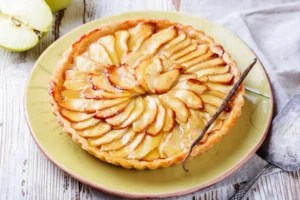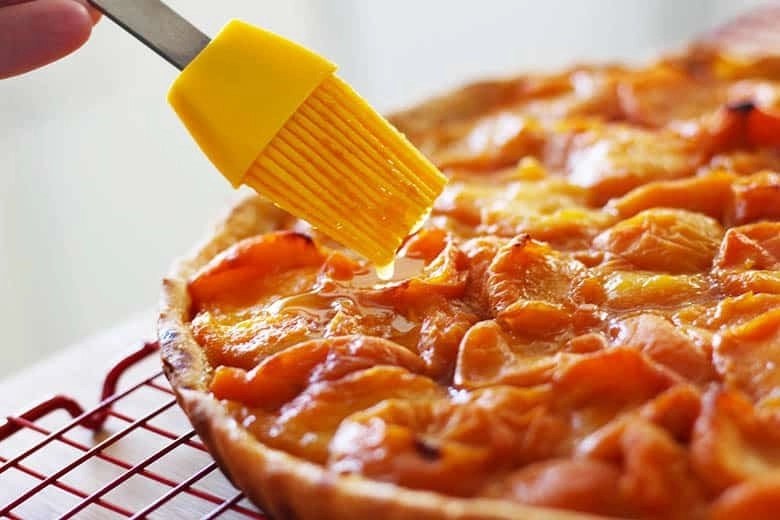French tarts represent a unique intersection of culinary expertise and artistic expression. With each layer carefully composed, bakers transform simple ingredients into visually striking creations. The process involves selecting the finest components and employing precise techniques to achieve the ideal balance of flavor and form. This exploration reveals not only the methods behind these desserts but also the artistry that elevates them to cultural significance. So, how are French tarts made?
Key Takeaways
- French tarts blend culinary techniques and artistic creativity, transforming simple ingredients into visually stunning desserts.
- The crust, made from pâte sucrée, acts as a canvas, allowing bakers to express their artistic vision.
- Varied fillings, from vibrant fruits to rich custards, enhance the tart’s aesthetic and flavor, creating a harmonious experience.
- Presentation techniques, including elegant garnishes and symmetrical arrangements, elevate the visual appeal of each tart.
- Enjoying a French tart is a communal experience, celebrating artistry and fostering connections among those who share it.
The Artistic History of French Tarts
As French tarts evolved over centuries, they became not only a culinary staple but also a canvas for artistic expression. Originating in the medieval era, these delightful pastries showcased the creativity of bakers who meticulously crafted both crust and filling. The process of how French tarts are made involves a delicate balance of technique and imagination, as the tart shell must be flawlessly baked to cradle an array of fillings. From rich ganaches to vibrant fruit arrangements, each tart tells a story of tradition and innovation. As they graced tables across France, these tarts fostered a sense of community, inviting people to gather and celebrate the beauty of shared culinary artistry, uniting diverse flavors into a harmonious experience.
Essential Ingredients: The Palette of French Tart Making
Creating a French tart is akin to an artist selecting colors for a masterpiece; the essential ingredients serve as the foundational palette. The buttery, flaky pastry known as pâte sucrée forms the tart’s canvas, inviting a variety of fillings. Fresh fruits, like vibrant berries and luscious peaches, provide bursts of color and flavor, while rich custards or zesty lemon curds add depth. A sprinkle of sugar or a drizzle of honey enhances sweetness, harmonizing the tart’s components. High-quality chocolate or cream can transform a simple tart into a decadent treat. Each ingredient is carefully chosen, reflecting the creator’s vision. Understanding how French tarts are made through these essential elements creates a connection to the artistry behind this beloved culinary tradition.
Techniques and Tools: Crafting the Perfect Tart
While the fundamental ingredients provide the foundation, the techniques and tools employed in crafting a French tart are equally important in achieving a masterpiece. Precision and artistry blend seamlessly, transforming simple components into exquisite creations.
- Pastry Blenders: These tools guarantee the perfect texture in tart dough, allowing for a delicate balance of flakiness and structure.
- Rolling Pins: Crucial for evenly spreading dough, they contribute to the tart’s uniform thickness, which is essential for even baking.
- Tart Pans: With their fluted edges, they lend elegance and shape, defining the tart’s final appearance.
Understanding how French tarts are made involves mastering these techniques, allowing bakers to express their culinary artistry while inviting others to share in the experience of indulgence.
Presentation: Elevating French Tarts to Culinary Art
Although the intricate process of making French tarts is rooted in technique, the artistry of presentation transforms these desserts into visual masterpieces. The vibrant colors of fresh fruits, the glossy glazes, and the delicate piping of cream elevate each tart into a work of art. Garnishes such as edible flowers or microgreens add a touch of sophistication, inviting admiration before the first bite. Symmetry plays an essential role; the careful arrangement of ingredients showcases the baker’s skill and attention to detail. Additionally, the choice of plating—whether a rustic wooden board or a sleek porcelain dish—can enhance the overall aesthetic. Fundamentally, the question “How are French tarts made?” extends beyond mere ingredients to the elegant artistry that captivates the eye and heart.
The Experience: Enjoying French Tarts as Edible Art
The experience of enjoying French tarts transcends mere consumption; it becomes a celebration of flavor and artistry. Each bite offers a harmonious blend of textures and tastes, inviting individuals to connect with both the culinary and visual elements of these masterpieces.
- The delicate pastry gives way to luscious fillings, creating a symphony on the palate.
- Visually stunning, tarts often feature vibrant fruits or intricate designs, making them a feast for the eyes.
- Sharing a tart can foster connections, as friends and family gather to savor the experience together.
In this way, French tarts exemplify how food can be more than sustenance. They encapsulate a moment of joy, evoking a sense of belonging through the artistry of flavor. How are French tarts made?
Frequently Asked Questions
What Are the Different Types of French Tarts Available?
French tarts come in various delightful forms, including the classic tarte aux pommes, rich tarte au chocolat, and zesty tarte au citron. Each type showcases unique flavors, textures, and artistic presentation, enchanting dessert enthusiasts everywhere.
How Long Do French Tarts Typically Last?
French tarts typically last about two to three days when stored properly in the refrigerator. Their delicate nature and fresh ingredients mean they are best enjoyed soon after preparation for ideal flavor and texture.
Can French Tarts Be Frozen for Later Use?
French tarts can indeed be frozen for later use. Properly wrapped and stored, they maintain their flavor and texture, allowing for a delightful treat at a moment’s notice, perfect for sharing with loved ones.
What Is the Origin of French Tart Recipes?
The origin of French tart recipes can be traced back to medieval times, evolving from simple pastry dishes to sophisticated creations. Influenced by regional ingredients, these tarts reflect a rich culinary heritage cherished across France.
Are There Gluten-Free Options for French Tarts?
Yes, there are gluten-free options for French tarts. Chefs often substitute traditional flour with almond flour or gluten-free blends, allowing those with dietary restrictions to enjoy these delightful pastries without sacrificing flavor or texture.
Conclusion
In the domain of culinary artistry, French tarts emerge as enchanting creations where skill meets aesthetic vision. Each layer, from the delicate pâte sucrée to the vibrant toppings, transforms simple ingredients into a feast for the senses. This artistic journey not only delights the palate but also captivates the eye, inviting appreciation for the craft involved. Ultimately, indulging in a French tart becomes a celebration of creativity, where each bite reveals the passion and precision of its maker.
You May Also Like To Read:





